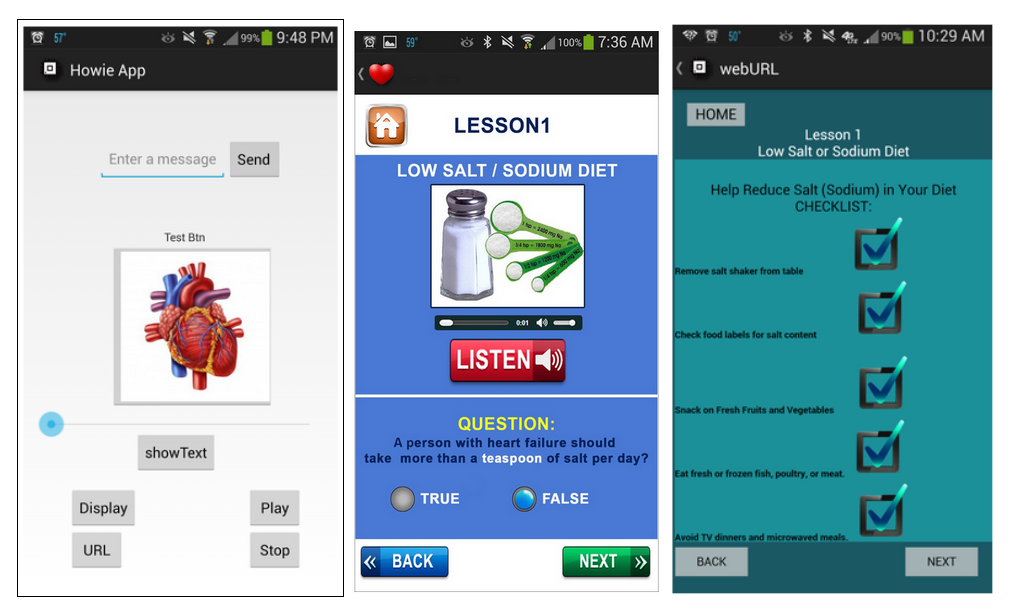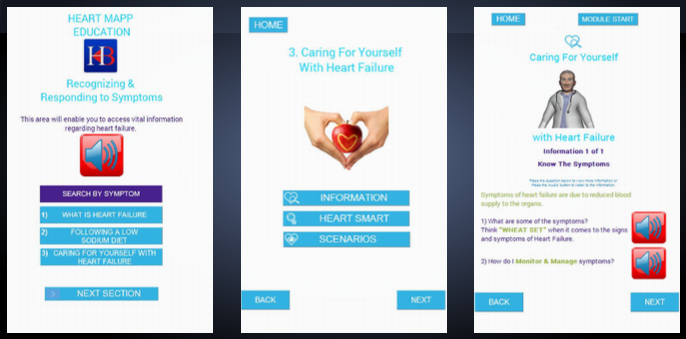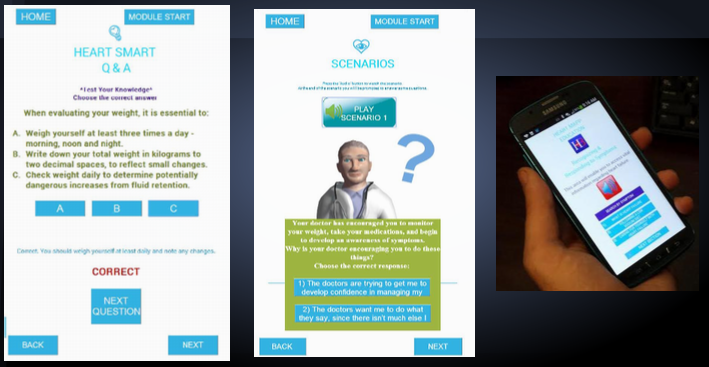Mobile Application for Patient Education (Heart MAPP)
Project Team: Richard E. Osorio, Tara Oneachtain, Howard Kaplan, Drew Oliver
Heart failure patients are a population statistically likely to be readmitted to hospital urgent care
for a number of reasons, including: (a) impaired cognitive abilities that negatively impact health
management; (b) poor nutrition and diet; (c) lack of exercise; and (d) insufficient awareness and
understanding of life threatening symptoms. Thus, in order to reduce hospital admissions and
increase patient health, it is essential to design a significant and measurable response that is
pragmatic, feasible and viable for all stakeholders. To this end, the team was charged with
designing and developing a number of modules addressing relevant topics for heart failure
patients.
Two primary theories were employed during the design of the application: Behaviorism and the
Cognitive Theory of learning, including Mayer’s Cognitive Theory of Multimedia Learning and
Sweller’s Cognitive Load Theory.
A Smartphone Android mobile device served as the conduit for health information and education
targeted to heart failure patients. Interactivity between the device and patient was enhanced
through the use of text, graphics, avatars (pedagogical agents), and audio. Equally important, the
content was designed to be informative, engaging, and relevant to the health care needs of the
patient. Additionally, patients had the flexibility to view – and review – content at their own
pace, regardless of the time of day and geographical location.
Technical development of media was carried out utilizing: HTML, Javascript, Adobe Photoshop,
Adobe After Effects, Adobe Illustrator, Java (Android SDK), Autodesk Maya and standard audio
recording software.

Screen capture from phone | Interaction / Technical Development


NOTES:
Developing for the mobile device using the Android SDK would allow us to use features of the smartphone to further enhance the educational experience. For example: we could have the user take and upload a photograph. Or, we could read data from the phones accelerometer.
Developing with the Android SDK will allow our group to deliver instructional content to the client that can be easily ported and/or integrated to work with their application.